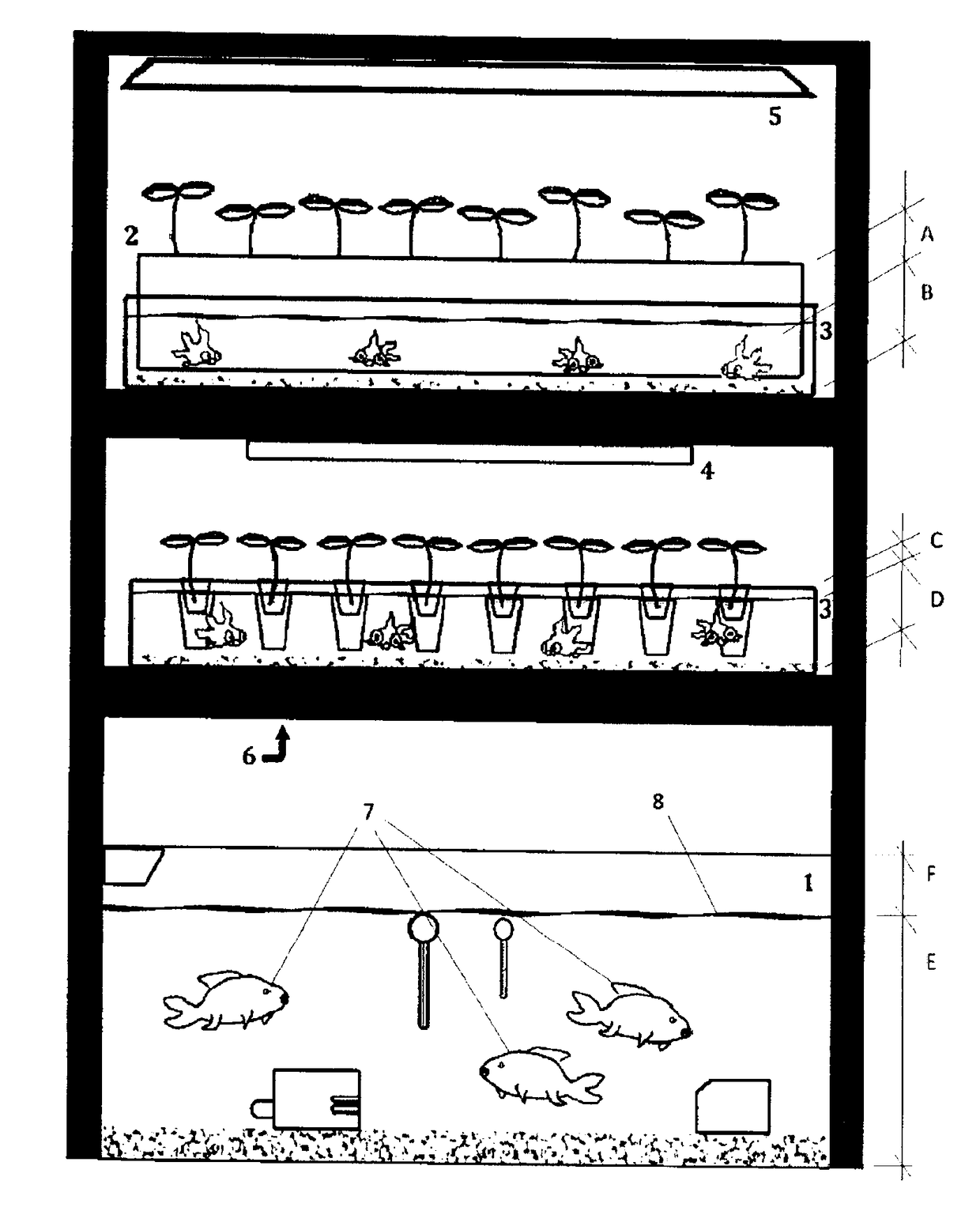Vertical indoor eco-system
a vertical system and eco-system technology, applied in the field of aquaculture and hydroponics, can solve the problems of plant roots being eaten, stress in a vertical system, and potential collapse, and achieve the effect of reducing the indoor real-estate footprint and reducing the shortcomings of plants
- Summary
- Abstract
- Description
- Claims
- Application Information
AI Technical Summary
Benefits of technology
Problems solved by technology
Method used
Image
Examples
Embodiment Construction
[0047]FIG. 1 shows the top-tier grow tank 1 of the preferred 3-tier embodiment of the vies of the invention. Tank 1 is a standard open-top glass aquarium.
[0048]FIG. 1 depicts components of the vies as follows:
1—aquarium tank,
2—grow bed,
3—porous media fill for grow bed,
4—inlet supply water tube,
5—supply water outlets providing a supply water spray or cascade over the grow bed 2 and the media fill 3,
6—tank outlet water tube providing, preferably, gravity fed outlet flow from the bottom of tank 1 over a drainage weir and into drainage tube outlet hole 7. The weir height sets the open water level in tank 1.
7—drainage hole,
8—freshwater aquatic species in open water environment,
9—actively growing plants,
10—tank 1 gravel bed
11—open water environment,
12—grow bed container perforations, preferably towards the bottom of tank 1,
13—light fixture,
14—grow light with on / off controls,
15—supply water cascade or spray from outlet holes 5,
16—bottom water feed with screen for water flow to and over dua...
PUM
 Login to View More
Login to View More Abstract
Description
Claims
Application Information
 Login to View More
Login to View More - R&D
- Intellectual Property
- Life Sciences
- Materials
- Tech Scout
- Unparalleled Data Quality
- Higher Quality Content
- 60% Fewer Hallucinations
Browse by: Latest US Patents, China's latest patents, Technical Efficacy Thesaurus, Application Domain, Technology Topic, Popular Technical Reports.
© 2025 PatSnap. All rights reserved.Legal|Privacy policy|Modern Slavery Act Transparency Statement|Sitemap|About US| Contact US: help@patsnap.com



